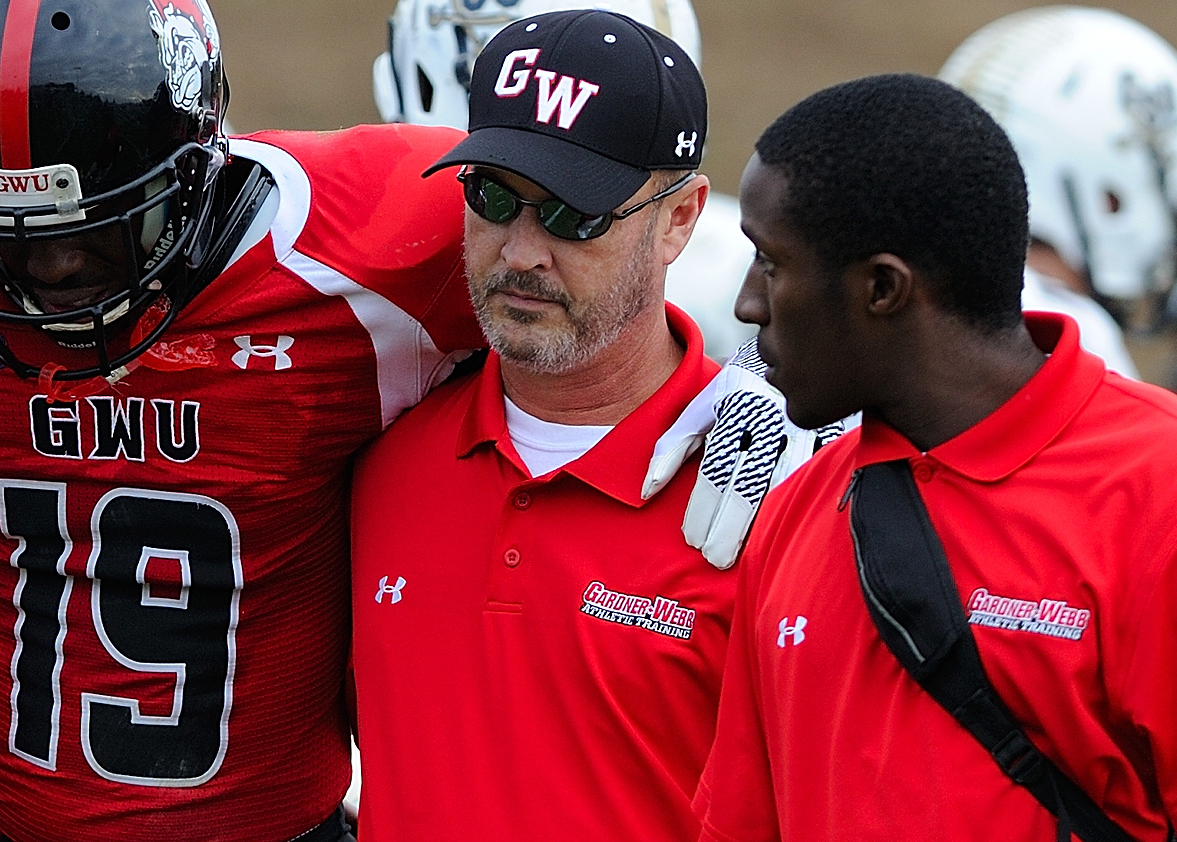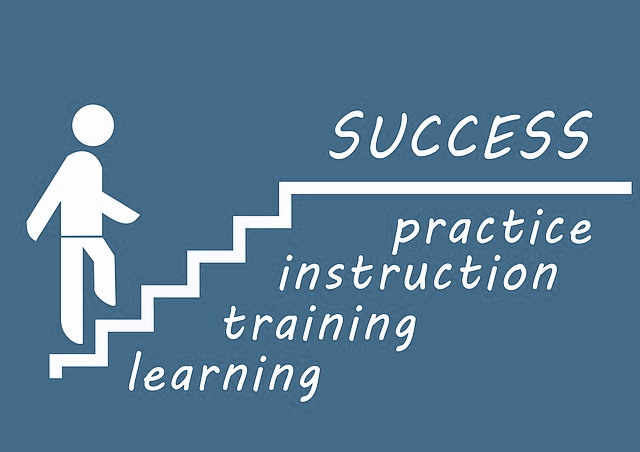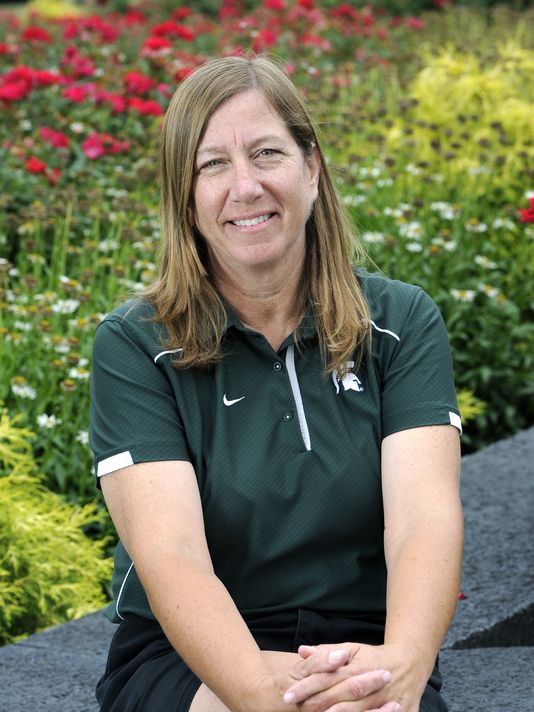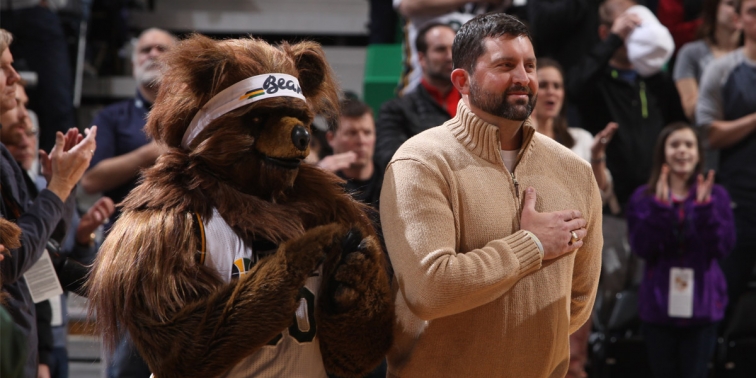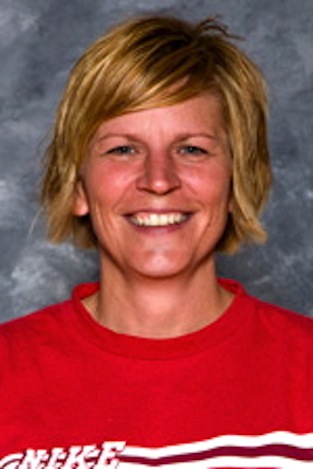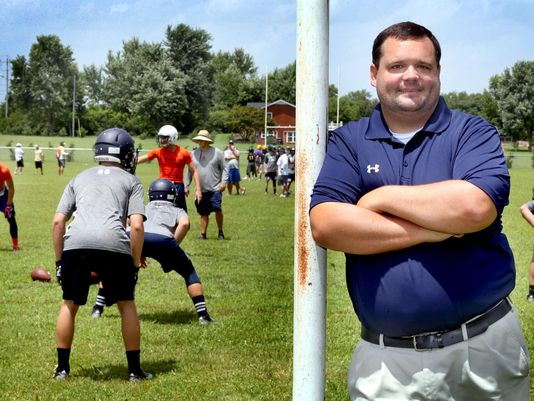
Lawrence County native Brad Rohling is often visible on the athletic sidelines.
But he is not a coach or athlete.
He is an athletic trainer at Central Magnet and is the coordinator of athletic training outreach for NHC Rehabilitation and TOA (Tennessee Orthopedic Alliance). Rohling took his undergraduate work at MTSU and graduate work at Auburn.
He worked with Auburn football for four years when Tommy Tuberville was the Tigers coach.
Rohling recently spoke with the DNJ about his role with Rutherford County athletics:
How many athletic trainers cover Rutherford County’s schools? And what are their responsibilities?
We have 10 that cover 10 high schools. All 10 have bachelor’s degrees. Five of them have completed their master’s. And five are currently enrolled in master’s classes.
They are responsible in covering any varsity, junior varsity or freshman sport.
What is your role, outside of being the athletic trainer at Central Magnet.
I oversee the other nine athletic trainers in the county. I oversee, manage and supervise and deal with any issues we have with any of those guys.
High school practices have begun across the state. What do you recommend athletes do to make sure they stay hydrated now?
It’s preparation. You have to pre-hydrate. You have to hydrate the day before, two days before going into it. You have to prepare yourself for what you are about to get into. You need to be smart and not practice in the middle of the day. There is the TSSAA heat policy that says we can’t go out if it is a certain temperature. And there is the recovery time. You need to get the proper rest and the proper food.
What type of meals and how much rest should athletes be getting now with practice starting?
It’s a lot more food than what you think because athletes are burning so many calories and using so much energy during the day. Proper food — stay away from any fast food. Grilled chicken sandwiches and things like that are good. Drinking fruit juices, Gatorade and water. They need to stay away from sodas and Kool Aid. There is too much sugar in that.
And how much rest do athletes need now?
For sure, they need to get the proper amount of rest. I wouldn’t stay out all night. I can’t put a number on it.
Concussions are a big concern these days. If an athlete receives a blow to the head, how can an athlete and parents monitor their athlete to make sure there isn’t a concussion? What are the signs?
Part of the Rutherford County concussion policy gives parents information as to what to look for. If they are sleeping a lot more or a lot less. If they are irritable or sensitive to light or noise. If they have nausea and aren’t acting right, those are potential signs. We put a lot on the parents because they know their kids; they see their kids at night and after practice. That’s part of the education packet.
Is everyone doing baseline testing for concussions in Rutherford County?
Everyone is.
What is baseline testing, and how important is it to monitor concussions?
Impact testing is just that, a baseline test. It’s not a cure. It’s not going to prevent a concussion. It’s not going to help them get better. You get a baseline as where that kid is for short-term memory, long-term memory and reaction time. Then, if a kid receives a concussion, they can take the test and it measures the results against what the baseline test result was.
With so many practices and sporting events going on during the school year, how do athletic trainers cover all of the teams?
There have been studies done as far as rate of injury. Football has the most injuries. Football is the priority. But soccer is a priority over volleyball just because it is a contact, collision sport. It’s based on the rate of injury.
What are the most common injuries during a high school season?
There are a lot of ankle injuries and shoulder injuries during the season just because of how the body is and how the joint is. The more movement you have in the joint, the looser it is.
How important is it for an athletic trainer to get to know the high school athlete?
That is a crucial part of our job because I can tell if something is going on with that kid. Even with a concussion, you can tell if he’s not acting right. Or if there is something else going on, I know the kids. In our role, a lot of times they feel more comfortable telling us than they will their coaches. We kind of have to be the go between. We have to sometimes play the good-guy role and also sometime the bad-guy role. That is a huge part of our job — is getting to know the kids.
Overall, how good are the coaches in Rutherford County to work with?
I think we’ve got the best coaches in the state. They understand that we’ve got a job to do, and that is to protect those kids. With all of the concussion legislation going on, they are definitely going to defer to our opinion on things. We generally don’t have any issues with coaches getting upset.
What is the best part of your job?
The kids, the coaches and the level of competition in Rutherford County.
What is the worst part of your job?
The way our program is set up, a lot of times the people that work for me hit two years and go work somewhere else. I enjoy watching those guys grow. As soon as they get to be a high-level athletic trainer, they leave and go somewhere else.
Contact Tom Kreager at 615-278-5168 or tkreager@dnj.com. Follow him on Twitter @Kreager.
Meet Brad Rohling
Who: Coordinator of athletic training outreach for NHC Rehabilitation and TOA
Age: 38.
Family: Wife: Amber; daughter: Stella, 6 months old
Education: Lawrence County High School graduate. Bachelor’s in athletic training at MTSU. Master’s in higher education administration from Auburn.
ORIGINAL ARTICLE: http://www.dnj.com/story/news/2015/07/11/qa-rohling-leads-county-athletic-trainers/30015753/

